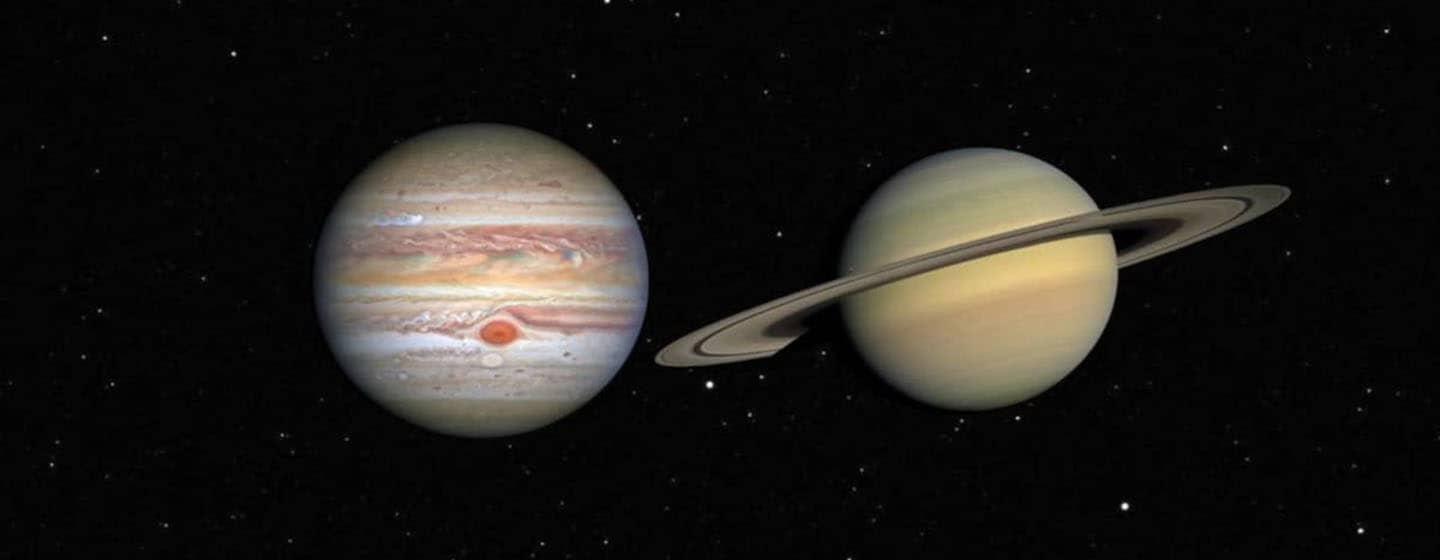Jupiter and Saturn Align to Create First “Christmas Star” in 800 Years


Nobody would disagree that 2020 has been quite a year.
So perhaps it’s only fitting that 2020 will end with something that hasn’t been seen for 800 years. And in a world desperate for any kind of good news, you wouldn’t be faulted for saying the solar system has decided to grace us with a cosmic Christmas miracle.
On December 21st (which happens to be the Winter solstice) Jupiter and Saturn will align so closely in the night sky that, from our vantage point here on Earth, they will look like a double planet.
Astronomers say it will create a radiant point of light often referred to as the "Christmas Star."
“For months now, Jupiter and Saturn have been closing in on each other in an apparent massive violation of social distancing,” explains Amy Sayle, Ph.D., Educator at Morehead Planetarium and Science Center. “In reality the planets are hundreds of millions of miles apart, but they currently happen to be lying in roughly the same line of sight from Earth’s point of view.
It’s all about our perspective. Jupiter and Saturn are about 450 million miles away from each other, but our line of sight is different because we’re orbiting quickly around the Sun.
In fact, the mechanics of the planets’ orbits are such that alignments in what are called “great conjunctions” happen every 19.6 years.
A conjunction is when two objects line up in the sky.
But you could call this a “great, great conjunction.” Jupiter and Saturn are rarely as close—from our point of view on Earth—as they will be on December 21, 2020. The two planets will be separated by less than the apparent diameter of a full Moon.
This event is so rare you’d have to go all the way back to just before dawn on March 4, 1226, to see a closer alignment.
As to why the conjunction is called the “Christmas Star”, it’s thought by some astronomers—including legendary German astronomer Johannes Kepler—that the “star of Bethlehem” in the Bible story of the Magi or “three wise men” could have been a rare triple conjunction of Jupiter, Saturn and Venus.
You can judge for yourself, although this event will only involve two of the three planets.
If the skies are clear, you will be able to catch this rare celestial event anywhere on Earth.
“For all of us in North Carolina, you will want to go out just after the dark and look to the southwest, in roughly the same direction that the sun set in,” add Sayle. “You will need to see fairly close to the horizon, so if trees and houses are in the way you will have to move around to get a good view.”
The planets will appear low in the sky for about an hour after sunset. They will appear closest on December 21, 2020, but you will be able to spot them together each evening that week.
If you miss it, you’ll be able to see another “great conjunction” again. But you’ll have to wait until March 15, 2080.
Learn more about all of the astrological phenomenon happening in December from NASA:
What are some skywatching highlights in December 2020? Catch the year's best meteor shower, the Geminids, in the middle of the month. Then witness an extremely close pairing of Jupiter and Saturn that won't be repeated for decades. And mark the shortest day of the year on the northern winter solstice.